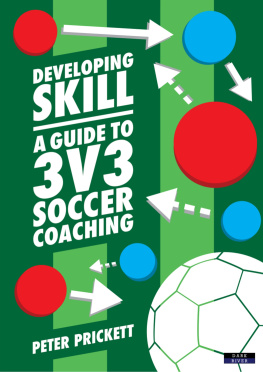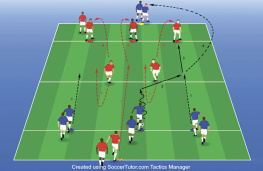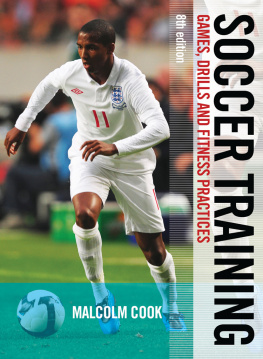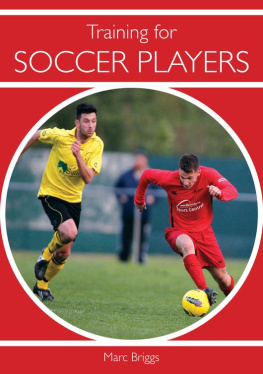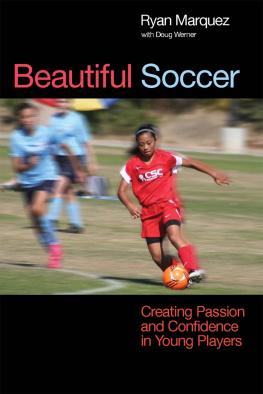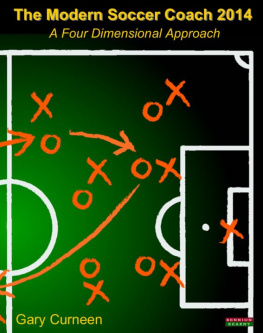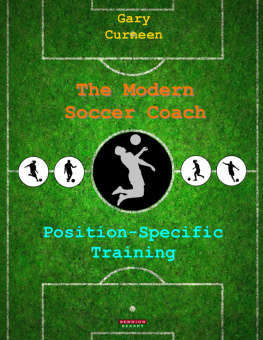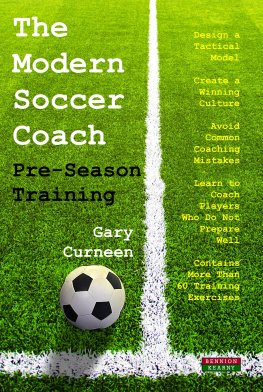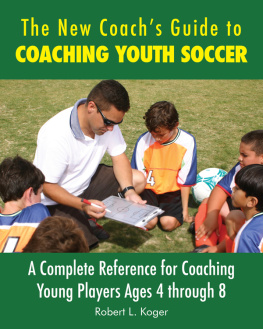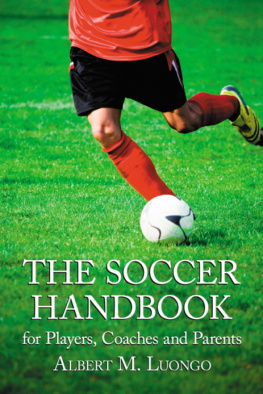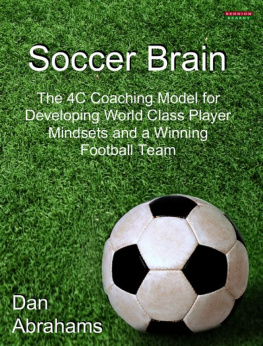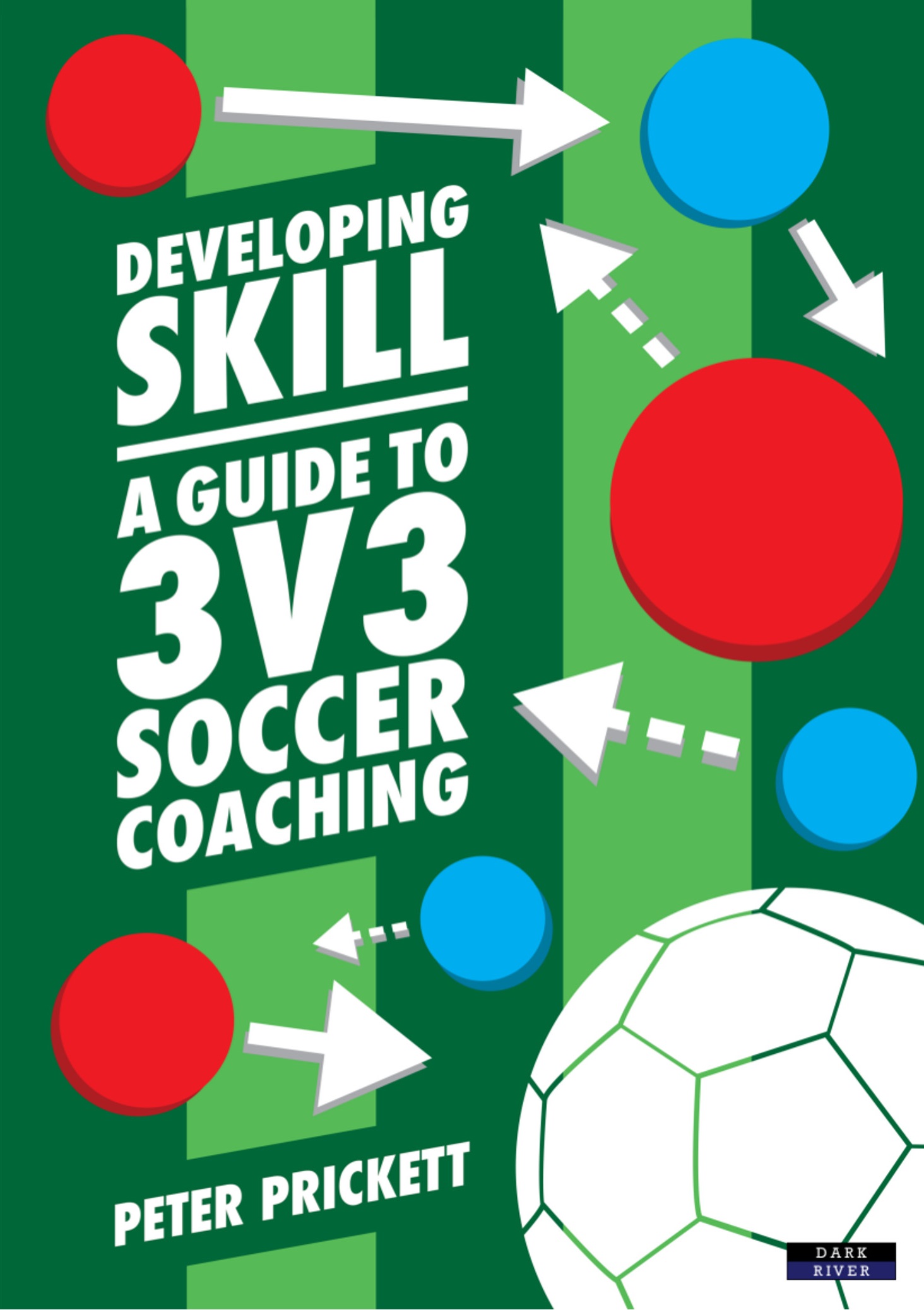Developing Skill: A Guide to 3v3 Soccer Coaching
*
Peter Prickett
*
[Smashwords Edition]
*

*
Published in 2018 by Dark River, an imprint of Bennion Kearny.
Copyright Dark River 2018
ISBN: 978-1-911121-51-0
All Rights Reserved. No part of this publication may be reproduced, stored in a retrieval system, or transmitted in any form or by any means, electronic, mechanical, photocopying, recording or otherwise, without the prior permission of the publisher.
This book is sold subject to the condition that it shall not, by way of trade or otherwise, be lent, re-sold, hired out or otherwise circulated without the publishers prior consent in any form of binding or cover other than that it which it is published and without a similar condition including this condition being imposed on the subsequent purchaser.
Dark River has endeavoured to provide trademark information about all the companies and products mentioned in this book by the appropriate use of capitals. However, Dark River cannot guarantee the accuracy of this information.
Published by Dark River, an imprint of Bennion Kearny Limited, 6 Woodside, Churnet View Road, Oakamoor, Staffordshire, ST10 3AE
www.BennionKearny.com
Many thanks to Garth Smith for his fantastic cover design.
Table of Contents
BazookaGoal and 3v3 UK
This book is supported by BazookaGoal and 3v3 UK.

1: A Starting Point
What do we love about football?
This question is short and simple but has myriad possible answers.
There are core and key overall aspects. Competition, glory, drama, storytelling, teamwork, artistry, and skill. As fans, there are two things that we want, victory and entertainment. Sometimes, one without the other is not enough. Teams can achieve genuine (or relative) success yet have an unhappy fan base because they have not witnessed a style of football that thrills them.
The greatest players are those who provide entertainment and excitement. It may manifest in different ways, but it is near universal that onlookers will be enraptured by moments of high quality. The higher the quality they see, the higher the entertainment levels. This then produces moments that last forever and keep fans glued to the sport.
Football is filled with contradictions. One of these is that a great team needs great individuals from whom great quality derives. Every link in the chain needs to be strong, while some individuals may emerge to be stronger than others. Between 2008 and 2018, the world has been enthralled by the collective play of Barcelona. Their wonderful tiki-taka style of pass and move football often requires no more than one or two touches, yet each of those touches needs to be a work of craftsmanship. Such a high quality of team play is only possible because of the outstanding quality of each player.
Barcelona have had one other thrilling aspect to their football. Although managers might have come and gone, one player has been constant through this period Lionel Messi. At Barcelona, he has been the ultimate individual within the team. The player with such pure quality that fast passing is no problem, and neither is dribbling past two or three players. Nor striking spectacularly from long-range or drawing in several opponents before releasing the perfect pass. We love the team, but we also love the individual.
Messi and Barcelona are not the only great individual and team to grace the game of football. During this period, there has been the fascinating duel between Messi and Ronaldo, sparking the never-ending debate about who is better. Or who is the greatest? Is either of these players superior to the legends of the past? Pele, Maradona, Cruyff, Di Stfano, or any others people choose to bring into the conversation. Each of these players had the quality, skill, decision making, and imagination to execute consistently and most importantly perhaps during the big moments. This ultimately is what coaches want for each of their young players. Can we somehow create the environment and practices that will give players the opportunity to develop top-level attributes?
It is grossly unrealistic to expect every young player to develop in this way, but unless we give them the chance, we will never know if they can. As coaches, we have limited time with our players, and that will always be an obstacle. More than that, no matter how much time we actually do have, we will always wish for more. The required abilities of a top level player form a very lengthy list.

(From the England DNA)
This many areas are daunting and need distilling. Time is going to dictate how much effect a coach can have on these areas. Sessions per week, and minutes per session, increase incrementally as young players and coaches move up the stages from grassroots to academy. In the main, coaches at all levels will be able to most affect technical, tactical and psychological outcomes at any level.
To my mind, the key to hitting such heights is what a player is capable of with the ball. The ball and the player need to form a deeply satisfying long-term relationship. One in which the player has full command of everything that the ball does. The player should be able to demand that the ball momentarily appears to defy physics and behave in a manner unexpected to their opponent. Immense amounts of practice are required, and many coaches assign time during training to this, but it takes more. Huge numbers of hours spent between a child and a ball are needed to perfect, refine, and experiment, in a quest to find their preferred moves.
It all starts with the ability to dribble. A dribble first mindset will pay big dividends in the long term. Players need to see an opponent and feel confident that they can take that player on. If they have been brought up as a passer, they will only ever pass when they see an opponent, eventually panicking when one comes too close. When a dribbler sees pressure (and an opponent), the mindset is different. This is not to panic; this is opportunity. When they get older, it is easier to teach a player who dribbles too much to pass than it is to teach a passer to become a dribbler.
The great dribblers are the players who best fulfil what we love about football. These players represent the footballer we are in our dreams. The ability to deceive and outmanoeuvre their opponent with shifts of the ball, jinks of the body, and astounding balance. Such entertainers are not the reserve of trophy-laden teams only. Such exciting dribblers can bring joy to teams with average results. In the Premier League alone, we have seen Juninho, Ginola, and Kinkladze bewitch with their ball playing ability, even though their teams did not achieve great results. A lack of any end product is often levelled at footballs dribblers but their tricks and skills are a device to create space and openings; once those are created, they are then judged on the shot, pass, or cross. What is often forgotten is that teams need players to have the ability to create those openings in the first place!
To get here, we need 1v1. If we are going to master the ball, we need to practise it against an opponent to achieve our dribbling mindset. If we work on ball mastery, and always move straight into situations where it will not be used, then an opportunity is wasted. 1v1s may occur in games where we have overloaded attacking situations, but fast passing outcomes are far more likely. Playing 1v1, there is no escaping it players need to dribble. Players need to face up to, and face off against, other players. Both as attackers and defenders. Defending against your immediate opponent is just as important as attacking. If a player cannot defend one on one, they will be picked out. They will be the link in the chain that opponents exploit. It will no longer be 5v5 or 11v11; the game will be 4v5 or 10v11. Not all evenly numbered match ups are equal.

